- Clone
- AER-37 (CRA-1) (See other available formats)
- Regulatory Status
- RUO
- Other Names
- FceRIa, FceRI-a, FceRI-alpha, FceRI alpha, high affinity IgE receptor
- Isotype
- Mouse IgG2b, κ
- Ave. Rating
- Submit a Review
- Product Citations
- publications
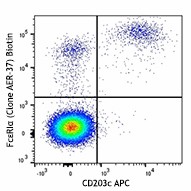
-

Human peripheral blood lymphocytes were stained with CD203c APC and biotinylated FcεRIα (clone AER-37) (top), or biotinylated mouse IgG2b, κ isotype control (bottom), followed by SAV-PE. -

| Cat # | Size | Price | Quantity Check Availability | Save | ||
|---|---|---|---|---|---|---|
| 334606 | 100 µg | $270 | ||||
High affinity IgE receptor (FcεRI) plays a key role in IgE-mediated allergic immune response. FcεRI is a tetrameric receptor complex, which is composed of one α-subunit (FcεRIα), one β-subunit, and two γ-subunits. FcεRIα directly binds IgE with high affinity, while the β- and γ-chains are responsible for mediating intracellular signals. FcεRIα is a 50 kD transmembrane protein with Ig superfamily structure. It is primarily found on mast cells and basophils. Further studies have indicated that FcεRIα is also expressed on many inflammatory cells including cutaneuos Langerhans cells, dendritic cells, monocytes of patients with allergic disorders, platelets, bronchial epithelial cells, eosinophils produced in hypereosinophilic syndrome, and neutrophils from allergy-induced asthma patients.
Product DetailsProduct Details
- Verified Reactivity
- Human
- Reported Reactivity
- Baboon, Cynomolgus, Rhesus
- Antibody Type
- Monoclonal
- Host Species
- Mouse
- Formulation
- Phosphate-buffered solution, pH 7.2, containing 0.09% sodium azide.
- Preparation
- The antibody was purified by affinity chromatography, and conjugated with biotin under optimal conditions.
- Concentration
- 0.5 mg/ml
- Storage & Handling
- The antibody solution should be stored undiluted between 2°C and 8°C. Do not freeze.
- Application
-
FC - Quality tested
- Recommended Usage
-
Each lot of this antibody is quality control tested by immunofluorescent staining with flow cytometric analysis. For flow cytometric staining, the suggested use of this reagent is ≤ 1.0 µg per 106 cells in 100 µl volume or 100 µl of whole blood. It is recommended that the reagent be titrated for optimal performance for each application.
- Application Notes
-
Clone AER-37 (CRA-1) has been reported to bind the receptor even in the presence of IgE.4
-
Application References
(PubMed link indicates BioLegend citation) -
- Yamaguchi M, et al. 1999. J. Immunol. 162:5455.
- Suzukawa M, et al. 2005. Int. Immunol. 17:1249.
- Charles N, et al. 2010. Nat. Med. 16:701. (FC) PubMed
- Yamaguchi M, et al. 1999. J. Immunol. 162:5455.
- Product Citations
-
- RRID
-
AB_2571885 (BioLegend Cat. No. 334606)
Antigen Details
- Structure
- Ig superfamily, 50 kD
- Distribution
-
Mast cells, basophils, cutaneuos Langerhans cells, dendritic cells, and monocytes from the patients with allergic disorders, platelets, bronchial epithelial cells, eosinophils from hypereosinophilic syndrome, neutrophils from allergic asthmatic patients
- Function
- Bind IgE, trigger IgE-mediated allergic response
- Ligand/Receptor
- IgE
- Cell Type
- Basophils, Dendritic cells, Eosinophils, Langerhans cells, Mast cells, Monocytes, Neutrophils
- Biology Area
- Immunology
- Molecular Family
- Fc Receptors
- Antigen References
-
1. Riske F, et al. 1991. J. Biol. Chem. 266:11245
2. Gounni AS, et al. 2001. FASEB J. 15:940.
3. Maurer D, et al. 1996. J. Immunol. 157:607
4. Maurer d, et al. 1994. J. Exp. Med. 179:745
5. Campbell AM, et al. 1998. Am. J. Respir. Cell Mol. Biol. 19:92. - Gene ID
- 2205 View all products for this Gene ID
- UniProt
- View information about FcepsilonRIalpha on UniProt.org
Related Pages & Pathways
Pages
Related FAQs
- How many biotin molecules are per antibody structure?
- We don't routinely measure the number of biotins with our antibody products but the number of biotin molecules range from 3-6 molecules per antibody.
Other Formats
View All FcεRIα Reagents Request Custom ConjugationCustomers Also Purchased
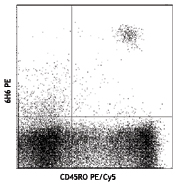
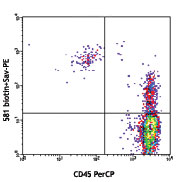
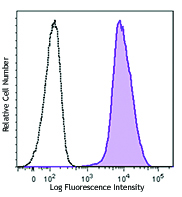
Compare Data Across All Formats
This data display is provided for general comparisons between formats.
Your actual data may vary due to variations in samples, target cells, instruments and their settings, staining conditions, and other factors.
If you need assistance with selecting the best format contact our expert technical support team.
-
Purified anti-human FcεRIα
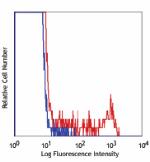
Human peripheral blood lymphocytes stained with purified AER... -
Biotin anti-human FcεRIα
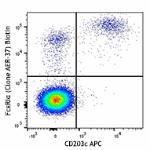
Human peripheral blood lymphocytes were stained with CD203c ... 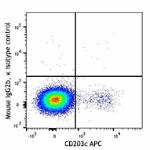
-
FITC anti-human FcεRIα
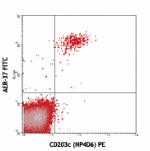
Human peripheral blood leukocytes stained with CD203c (NP4D6... -
PE anti-human FcεRIα
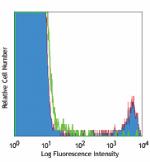
Human peripheral blood leukocytes stained with AER-37 (CRA-1... -
Alexa Fluor® 647 anti-human FcεRIα
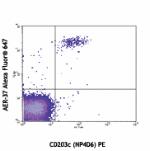
Human peripheral blood leukocytes stained with CD203c (NP4D6... -
PerCP anti-human FcεRIα
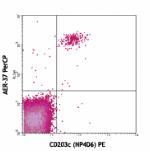
Human peripheral blood leukocytes stained with CD203c (NP4D6... -
APC anti-human FcεRIα
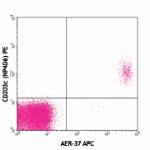
Human peripheral blood lymphocytes stained with CD203c (NP4D... 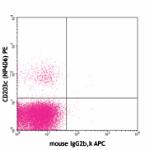
-
Pacific Blue™ anti-human FcεRIα
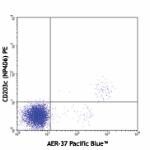
Human peripheral leukocytes stained with CD203c (NP4D6) PE a... 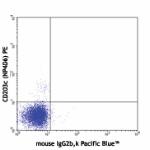
-
PE/Cyanine7 anti-human FcεRIα
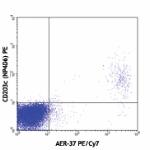
Human peripheral blood leukocytes stained with CD203c (NP4D6... 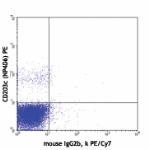
-
PerCP/Cyanine5.5 anti-human FcεRIα

Human peripheral blood lymphocytes were stained with CD203c ... -
Brilliant Violet 421™ anti-human FcεRIα
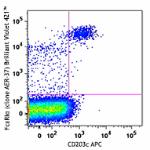
Human peripheral blood lymphocytes were stained with CD203c ... 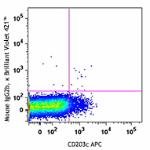
-
Brilliant Violet 510™ anti-human FcεRIα
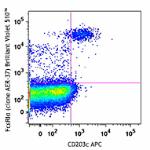
Human peripheral blood lymphocytes were stained with CD203c ... 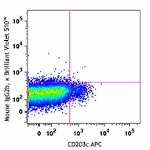
-
Brilliant Violet 605™ anti-human FcεRIα
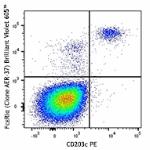
Human peripheral blood lymphocytes were stained with CD203c ... 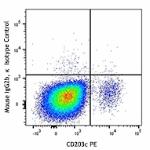
-
APC/Cyanine7 anti-human FcεRIα

Human peripheral blood lymphocytes were stained with CD203c ... -
Alexa Fluor® 700 anti-human FcεRIα
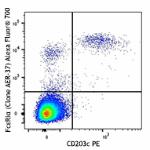
Human peripheral blood lymphocytes were stained with CD203c ... 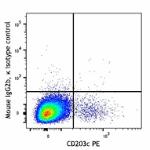
-
PE/Dazzle™ 594 anti-human FcεRIα
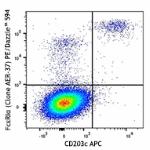
Human peripheral blood lymphocytes were stained with CD203c ... 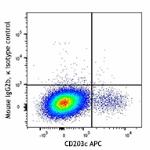
-
Brilliant Violet 711™ anti-human FcεRIα
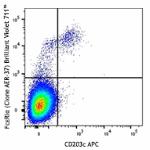
Human peripheral blood lymphocytes were stained with CD203c ... 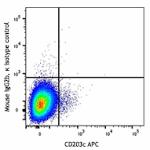
-
Alexa Fluor® 488 anti-human FcεRIα
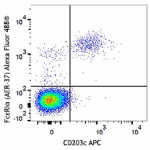
Human peripheral blood lymphocytes were stained with CD203c ... 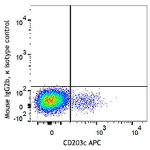
-
TotalSeq™-A0352 anti-human FcεRIα
-
TotalSeq™-C0352 anti-human FcεRIα
-
APC/Fire™ 750 anti-human FcεRIα

Human peripheral blood lymphocytes were stained with CD203c ... -
Ultra-LEAF™ Purified anti-human FcεRIα

Human peripheral blood lymphocytes stained with purified AER... -
TotalSeq™-B0352 anti-human FcεRIα
-
TotalSeq™-D0352 anti-human FcεRIα
 Login/Register
Login/Register 






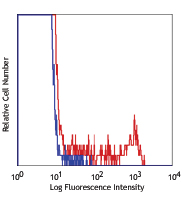



Follow Us